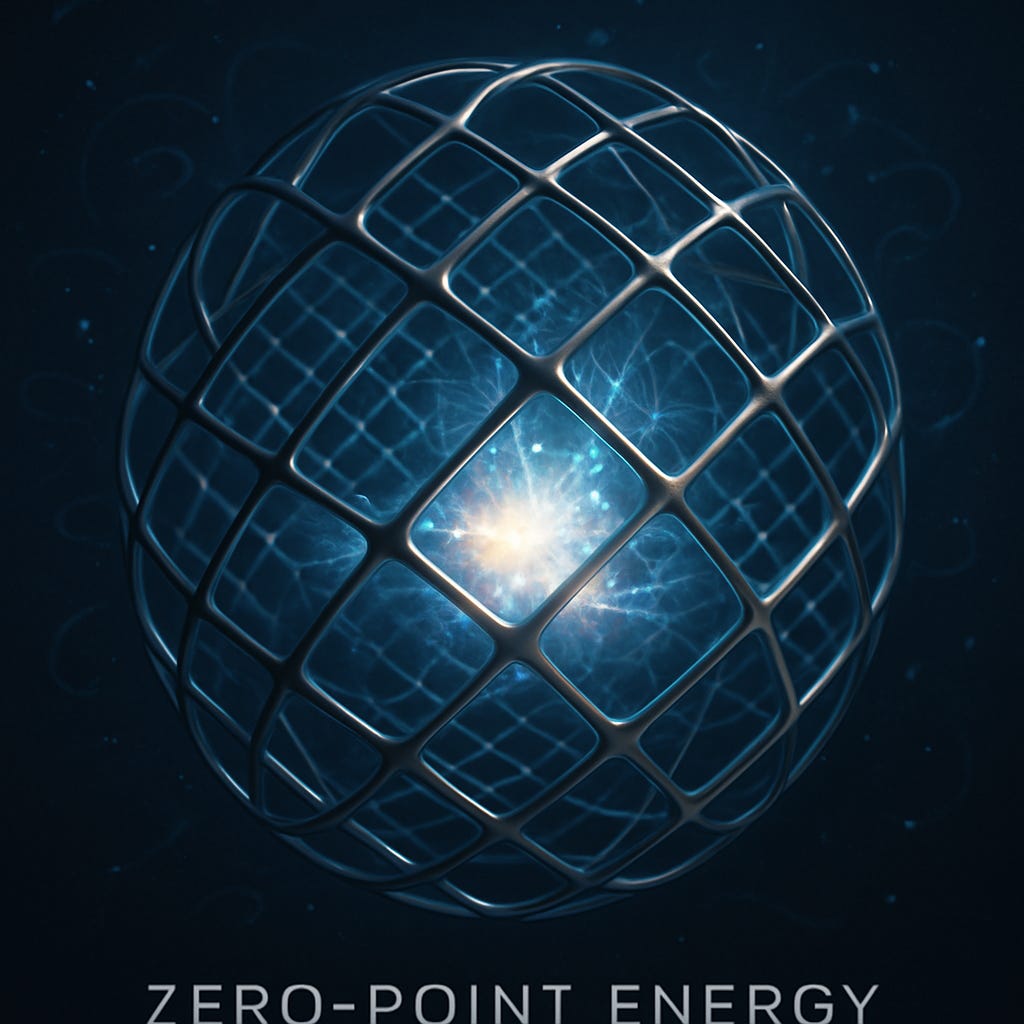What Do We Mean by "Zero-Point Energy"?
Why “Energy from the Zero Point Field” is a More Accurate Term and Why It Matters
Why is calling it energy from the Zero Point Field scientifically acceptable
For decades, the term zero-point energy has existed on the fringe of mainstream science, used in speculative physics, obscure patents, and controversial theories. Yet in solid-state systems like LENR (Low Energy Nuclear Reactions), metal hydrides, and coherent hydrogen-lattice setups, we observe something unmistakable: excess energy.
The precise source of this energy remains undefined.
So we ask: Where is the excess energy coming from?
Until a unified and verified theory emerges, terms like zero-point energy serve as placeholders, scientific metaphors for anomalies we cannot yet explain within the bounds of classical theory. This isn't pseudoscience, it's open scientific inquiry.
Why Zero-Point Energy Is Still a Useful Scientific Placeholder
Zero-point energy refers to the lowest possible energy state of a quantum system, even at absolute zero. Mainstream physics acknowledges that quantum vacuum fields contain energy, but our current frameworks suggest we can’t directly extract usable energy from them.
Advanced condensed matter experiments suggest that structured environments with coherent quantum states release latent energy via mechanisms that are not yet fully understood.
This lends credibility to using the term zero-point energy as an interim conceptual model for explaining anomalous heat production or energy release in solid-state systems.
Quantum Coherence, Tunneling, and the Mystery of Excess Energy
Here’s what we do observe in several verified LENR systems:
Hydrogen or deuterium is absorbed into a metal lattice (like palladium or nickel).
The atoms enter coherent quantum states within the lattice, creating zones of entanglement.
These coherent zones enable quantum tunneling, leading to reaction pathways with unusually low energy barriers.
Result: energy is released, but without conventional nuclear signatures.
These processes do not violate thermodynamics.
Instead, they show that the energy landscape of condensed matter under coherence is not yet fully understood. That’s not magic; it’s the frontier of quantum material science.
Is This Overunity? Not Exactly.
The term “overunity” implies a violation of the conservation of energy. What we're seeing is more subtle and more interesting.
We input a small amount of electrical or thermal energy, and far more heat/energy is generated. But the system is not creating energy from nothing. It's tapping into previously unidentified reservoirs:
Nuclear binding energy within the lattice
Field energy from vacuum fluctuations
Subatomic energy states are not yet fully understood
The measurable input acts as a trigger, not the energy source.
So no, it's not "overunity" in the sense of breaking physics. It's a clue that our current models are incomplete.
We might better describe this as “unidentified unity”; energy conservation holds, but the source of the output energy remains to be explained.
Naming the Phenomenon
Ultimately, any name is provisional. While the term zero-point energy is often burdened by pseudoscientific misuse, referring to it instead as “energy drawn from the Zero Point field” offers a more scientifically grounded and less stigmatized expression. It emphasizes the quantum vacuum or coherent field origin without invoking fringe connotations, making it a more acceptable placeholder as we refine the theory.
Publisher’s Note:
Whether we call it zero-point energy, LENR, quantum hydrogen catalysis, or something yet unnamed, the consistent observation remains: energy is emerging under conditions that defy conventional models.
This isn’t speculation, it’s empirical. Verified experiments continue to show anomalous heat and energy outputs with no standard nuclear byproducts that demand our attention.
Progress depends on asking hard questions, not ignoring inconvenient results. As researchers refine materials, measure with precision, and push the boundaries of coherence and quantum structure, we edge closer to understanding what we’re truly tapping into.
Science doesn’t move forward by consensus; it moves forward by discovery. We stand at the threshold of something transformative.
Let’s remain open, disciplined, and engaged, because the frontier isn’t ahead of us. It’s already unfolding beneath our feet.
Note: This is a conceptual graphic designed to illustrate the physical processes involved in energy extraction during the LENR (Low Energy Nuclear Reactions) process.
~ New Fire Energy







